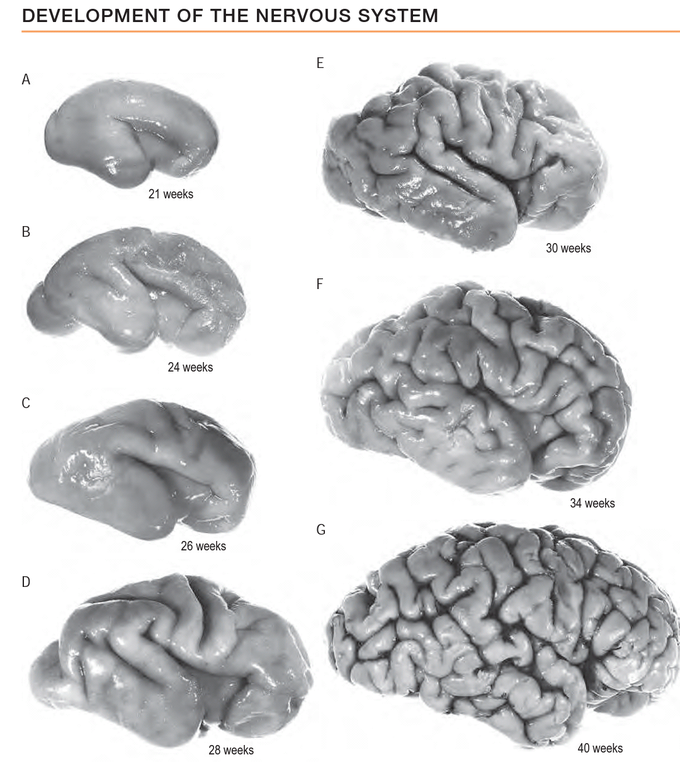

Development Of Central Nervous System
The superolateral surfaces of human fetal cerebral hemispheres at the ages indicated, showing the changes in size, profile and the emerging pattern of cerebral sulci with increasing maturation. Note the changing prominence and relative positions of the frontal, occipital and, particularly, the temporal pole of the hemisphere. At the earliest stage (A), the lateral cerebral fossa is already obvious; its floor covers the developing corpus striatum in the depths of the hemisphere and progressively matures into the cortex of the insula. The fossa is bounded by overgrowing cortical regions – the frontal, temporal and parietal opercula – which gradually converge to bury the insula; their approximation forms the lateral cerebral sulcus. By the sixth month, the central, pre- and postcentral, superior temporal, intraparietal and parieto-occipital sulci are all clearly visible. In the subsequent stages shown, all the remaining principal and subsidiary sulci rapidly appear, and by 40 weeks, all the features that characterize the adult hemisphere in terms of surface topography are present in miniature.

